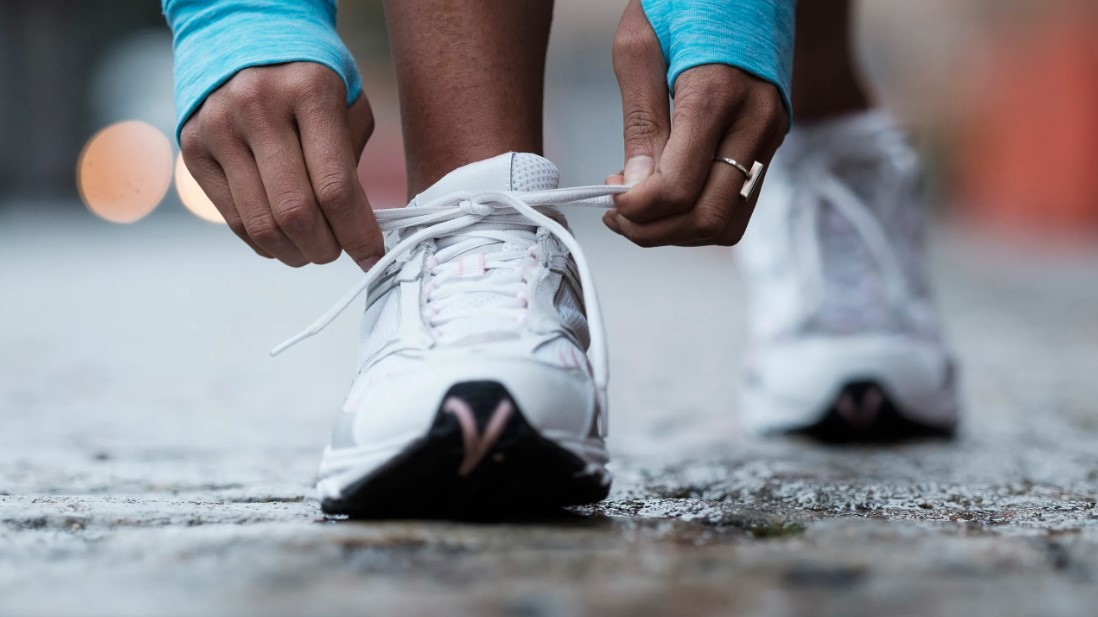How Physical Activity Makes Us Feel Joy and Helps to Cope with Stress
Fitness enthusiasts often compare their love to exercise with drug addiction, and there is some truth behind it: when exercising, the body produces the same chemicals as when taking drugs – dopamine, noradrenaline, endocannabinoids, endorphins, etc. So why physical activity changes our brains almost as much as illegal drugs, but without the destructive effects on our bodies? So explains Kelly McGonigal, Ph.D., and psychologist, in her book “The Joy of Movement: How exercise helps us find happiness, hope, connection, and courage.”
After reading this book today, we want to tell you why our reward system doesn’t see the difference between cannabis, sports, and a loved one and why scientists want to create a psychostimulant that would make naturally inactive people run with burning eyes to the gym.
In the late 1960s, Brooklyn psychiatrist Frederick Beckeland sought out athletes to participate in a study. In his last experiment, he proved that exercise improves sleep quality. So he wanted to test the following hypothesis “Would sleep quality deteriorate if you stopped physical activity?”
The experiment required people who exercised regularly and were prepared to stop exercising for thirty days. The problem was that no one wanted to participate.
Then Beckeland offered potential participants a much higher reward than the last time. Later he said that many, especially those who exercised every day, said they would not stop exercising at all costs.
Finally, the scientist managed to assemble a group. During the experiment, the participants complained not only of worsened sleep quality but also of serious psychological problems provoked by motor deprivation.
Bekeland’s study, published in 1970, is considered the first scientific evidence proving the existence of physical exercise addiction. Since then, numerous studies have confirmed that people who exercise regularly, skipping even one workout, become more anxious and irritable.
Three days without exercise cause symptoms of depression, while a week causes serious mood problems and insomnia. Hungarian biophysicist Attila Szabo, a researcher of physical exercise, said that more extended experiments with no regular workouts are simply “pointless.”
Even if it is possible to draw participants for such a study, those who formerly exercised regularly will cheat and lie, continuing to work out secretly, just like people with drug addictions.
Fitness enthusiasts and scientists often compare the love of workouts to addiction, and there is some truth in that. Physical activity does change the brain and affects the same neurotransmitter systems as cannabis or cocaine. Athletes compare themselves to addicts who need a dose and talk about the same pleasure.
Additionally, athletes and people addicted to sports tend to exhibit certain traits that also affect chemically addicted people. For instance, there is the so-called attention-grabbing phenomenon: if there is alcohol in the room, an alcoholic will think only about alcohol; likewise, people who exercise regularly show increased attention to everything related to sports. With attention-grabbing, the brain is always looking for an opportunity to indulge in a favorite habit.
Even more apparent parallels can be drawn by examining the results of brain scans. For example, when people who call themselves “sports buffs” see images of people doing sports, the areas of the brain responsible for desire flare up like smokers do when they see pictures with cigarettes.
A small percentage of athletes also show symptoms of real addiction: they agree with the statements “exercise is the best thing in my life” and “I have had conflicts with my relatives/partner because I spend too much time working out.”
One participant in the study, a 46-year-old long-distance runner, confessed to scientists that after breaking her ankle, she continued to run for two years instead of allowing her bones to heal correctly. When scientists asked what would prevent her from running, she said only if they put her in shackles.
Such studies suggest that physical activity activates the exact addiction-forming mechanism as most powerful drugs.
By examining the similarities between physical activity and chemical dependency, we can understand how exercise changes the brain. We can also realize why the more we exercise, the more joyful physical activity becomes.
However, when comparing motor activity and addiction, three limitations should still be stated:
- Most sports enthusiasts don’t suffer from an addiction that negatively affects their health and ability to live healthy lives.
- Their relationship with exercise does include desire, necessity, and consistency. But when people talk about their passion for exercising, the comparison with alcoholism is not too apt after all.
- Yes, people get hooked on exercise, but it is still not a classic addiction story.
Perhaps the most pertinent comparison should be made between sports and antidepressants. Besides, many of us get hooked on physical activity not because it is addictive but because our brains feel the training is beneficial and reward us for doing it.
For more than a decade, scientists have been trying to create a drug that imitates the physiological effects of exercise, such that you can take a pill instead of activity and use it to produce the same molecular changes in the body as high-intensity workouts make.
Not every scientist believes this is a good idea. For example, the biologist Theodore Garland Jr. in an interview for the New Yorker, said it would be better to create a drug that would motivate us to do sports.
Garland wasn’t the only one thinking of doing so. Sports physiologist Samuele Marcora suggested using psychoactive drugs to motivate people to live more actively. The most promising candidates for this role are caffeine, modafinil (an analeptic to treat drowsiness in people with narcolepsy), and the stimulant drug methylphenidate.
Remarkably, these three drugs mainly affect dopamine and norepinephrine, two neurotransmitters that increase during physical activity. Dopamine and norepinephrine are the reason why sports activity boosts our mood.
Marcora even suggested using drugs that stimulate opioid receptors for this purpose if they would enhance the runner’s high. Do you also think that’s too much?
The very idea of supplemental stimulants for “workout motivation” suggests that the human brain lacks the resources that inspire us to exercise and needs a psychotropic drug to trick people and make them fall in love with sports. But all studies on this subject strongly suggest that the sports habit is easily achieved even without psychotropic drugs. Sport is the same drug. Just like narcotic drugs, regular exercise trains our brains to love them, want them, and need them repeatedly.
The brain reward system forms any addiction, and all known drugs (alcohol, cocaine, heroin, nicotine) affect this system similarly. After the first use, the drug causes a sudden release of dopamine – a neurotransmitter that signals the presence of a “reward.”
Dopamine captures attention and commands the use of the substance that triggered this reaction or to repeat the action that triggered its previous release. Most drugs also increase the “good mood hormones” – endorphins, serotonin, and norepinephrine. Thus a powerful neurobiochemical combination leads to the formation of addiction.
Continuous use of the substance triggers a mechanism that scientists call the “molecular switch for addiction.” If the drug is taken regularly, a neural brain reward system accumulates a transcriptional protein that helps the brain account for previous experiences. These protein molecules cause long-term changes in dopaminergic neurons, making them more susceptible to the substance triggering the process.
The brain cells exposed to such changes become less susceptible to other rewarding stimuli: they have a “host.” And if you try to tempt them with something else, they won’t respond. A brain reward system sharpened for a particular substance will want it, not a delicious home-cooked meal or a beautiful sunset.
All the symptoms of addiction begin to appear as soon as the molecular switch is triggered:
- you want precisely that substance and nothing else
- you are ready to sacrifice something to get the “reward”
- and if you can’t get it, the withdrawal begins
- short-term pleasure turns into permanent desire and finally into addiction
Scientists have observed changes in the brain that, during regular use, “learned” to want cocaine, alcohol, and sugar. But does exercise have the same effect? The answer is complicated. In some ways, the physical activity effect is similar to drug addiction.
When exercising, the body produces the same chemicals as drugs – dopamine, norepinephrine, endocannabinoids, endorphins, etc. With repeated exposure, running triggers a molecular mechanism to form the addiction.
Rats running ten kilometers a day for one month showed the same neuronal changes as the rodents injected with a daily dose of cocaine or morphine. Moreover, the behavior of the rats running on the wheel strongly resembles the addiction pattern in humans: if you keep them off the wheel for twenty-four hours, they start running with tripled strength when access is restored.
But there is an essential difference between physical activity and drugs — first, the length of the addictive period. Although the same changes occur in the brain reward system after both exercise and drugs, the process of forming an addiction to exercise takes longer.
Two weeks of running on the wheel are not enough for laboratory rats to turn the molecular “switch”; only after six weeks do the rats start running more in the evenings, and a neurobiochemical pattern of addiction is noted. The same thing happens with sedentary adults: once they start engaging in high-intensity exercise, they note that activity becomes more enjoyable every day, peaking at six weeks.
A study of new fitness club clients found that exercising at least four times a week for six weeks is necessary to develop a workout habit. Such a long addictive period indicates that on a molecular level, the process of forming an addiction to exercise differs from the process of forming an addiction to drugs.
Drugs literally “assign” the brain reward system and quickly subdue it, while sports do this gradually.
The feelings from the first workout will not necessarily be the same as those from subsequent workouts. Many people need more time to fall in love with physical activity. Exercises don’t immediately feel good, but as the body and brain adapt.
Keep in mind that the reward for us is not only the physical sensation but also the meaning we attach to the exercises.
For premium readers







